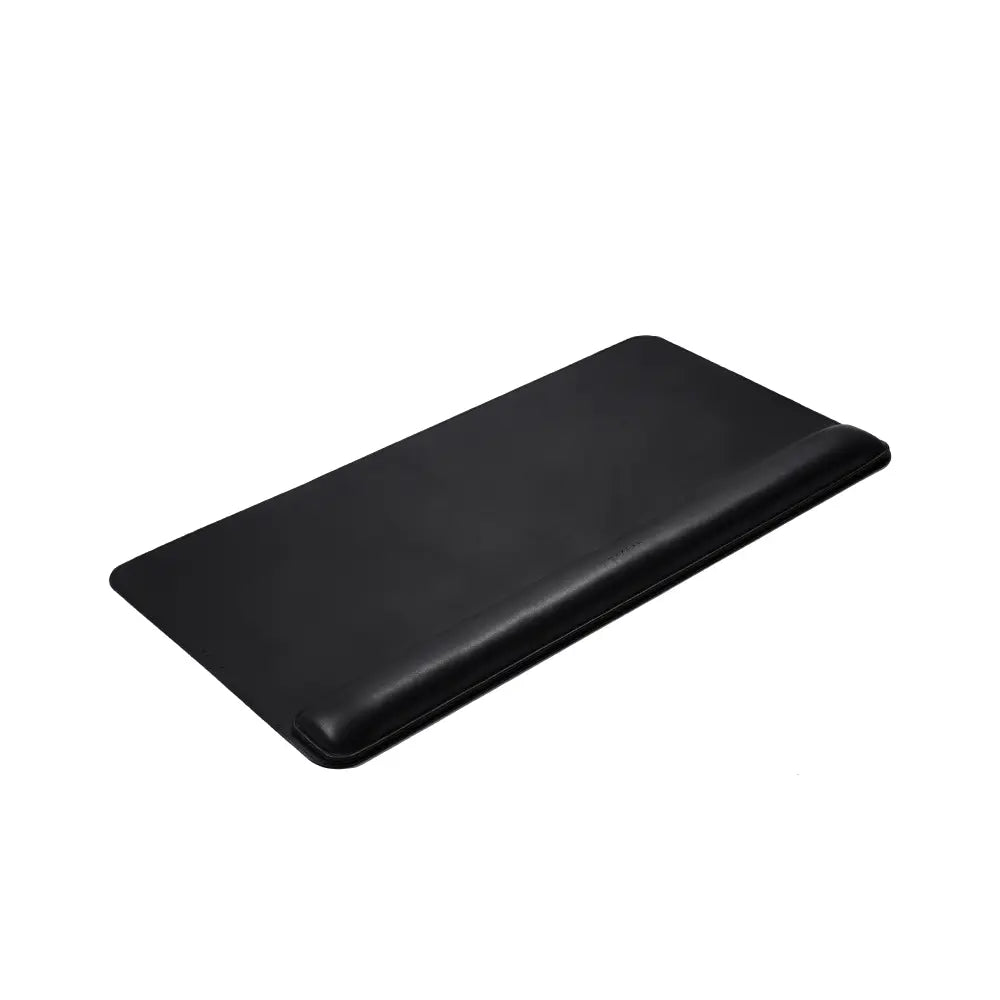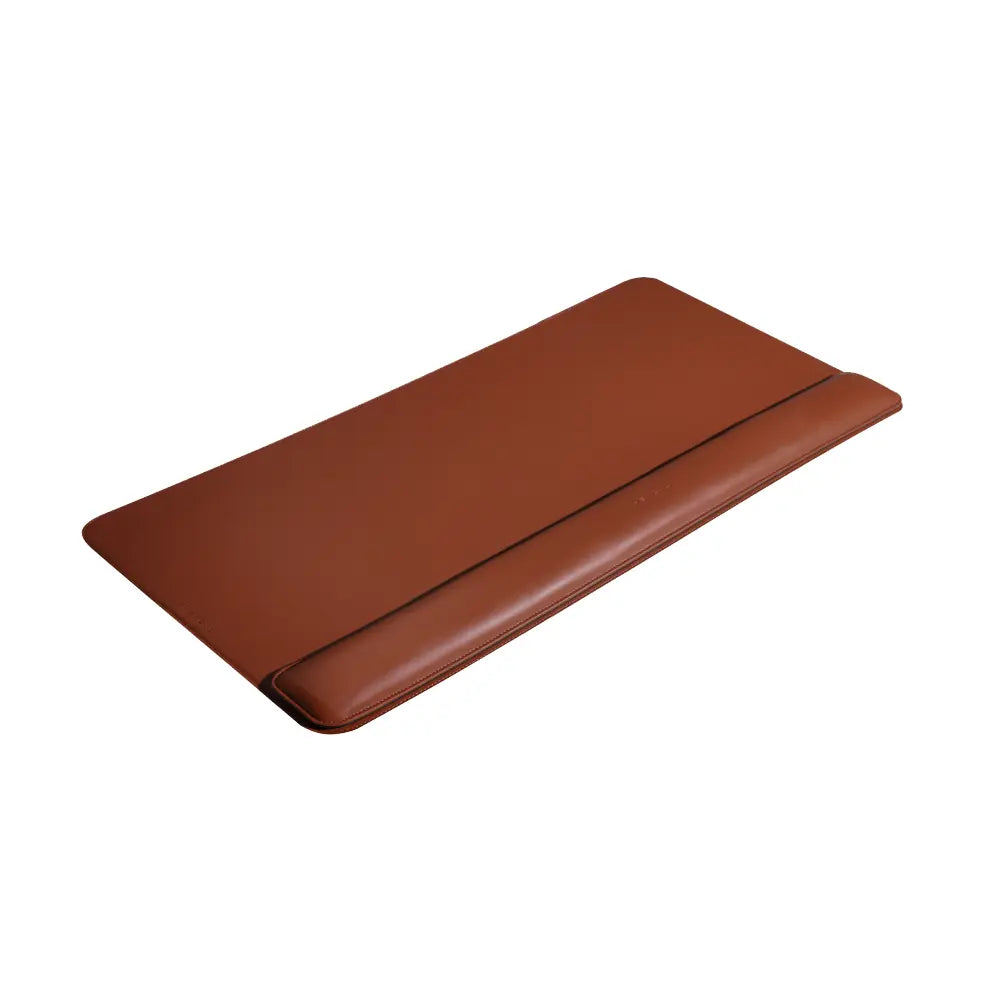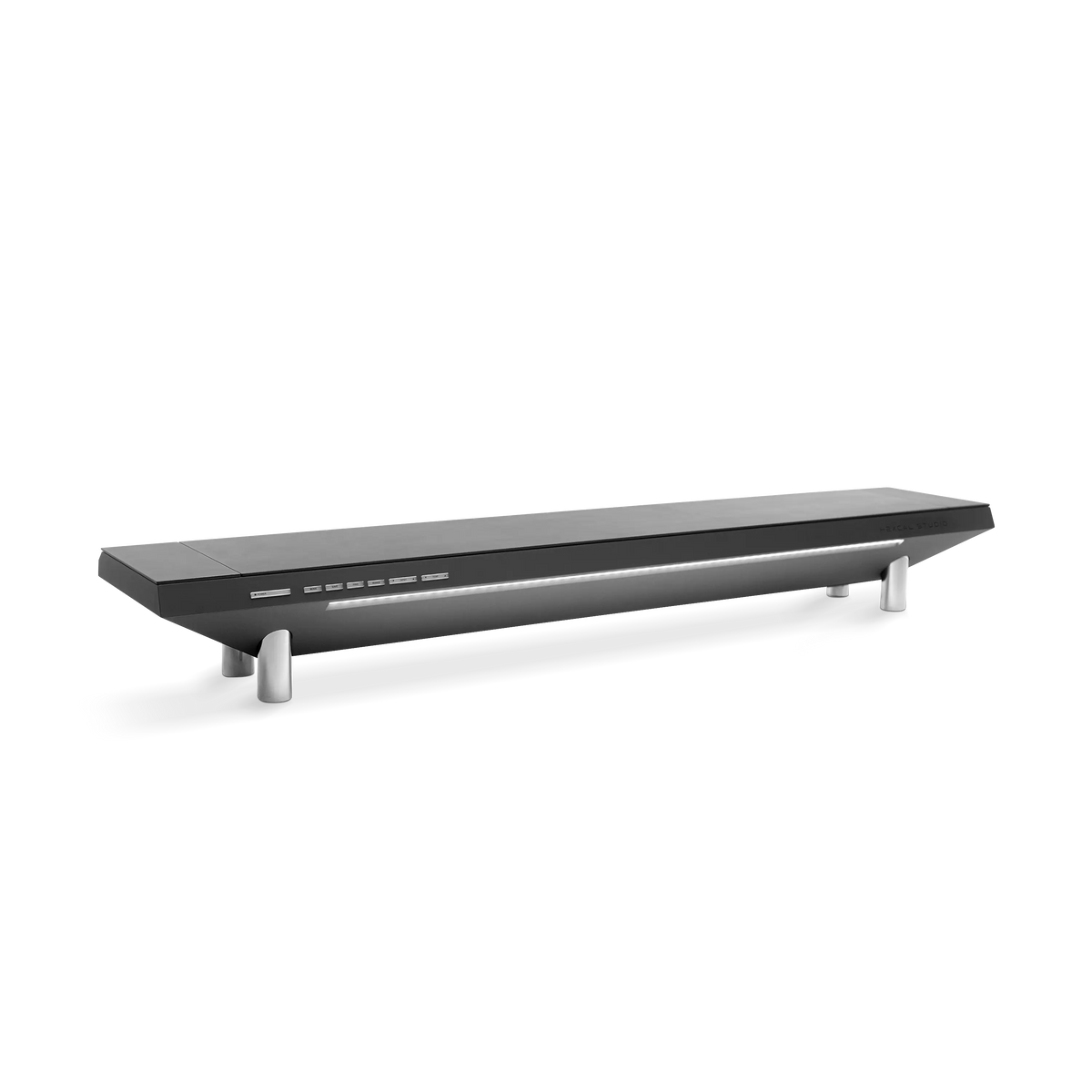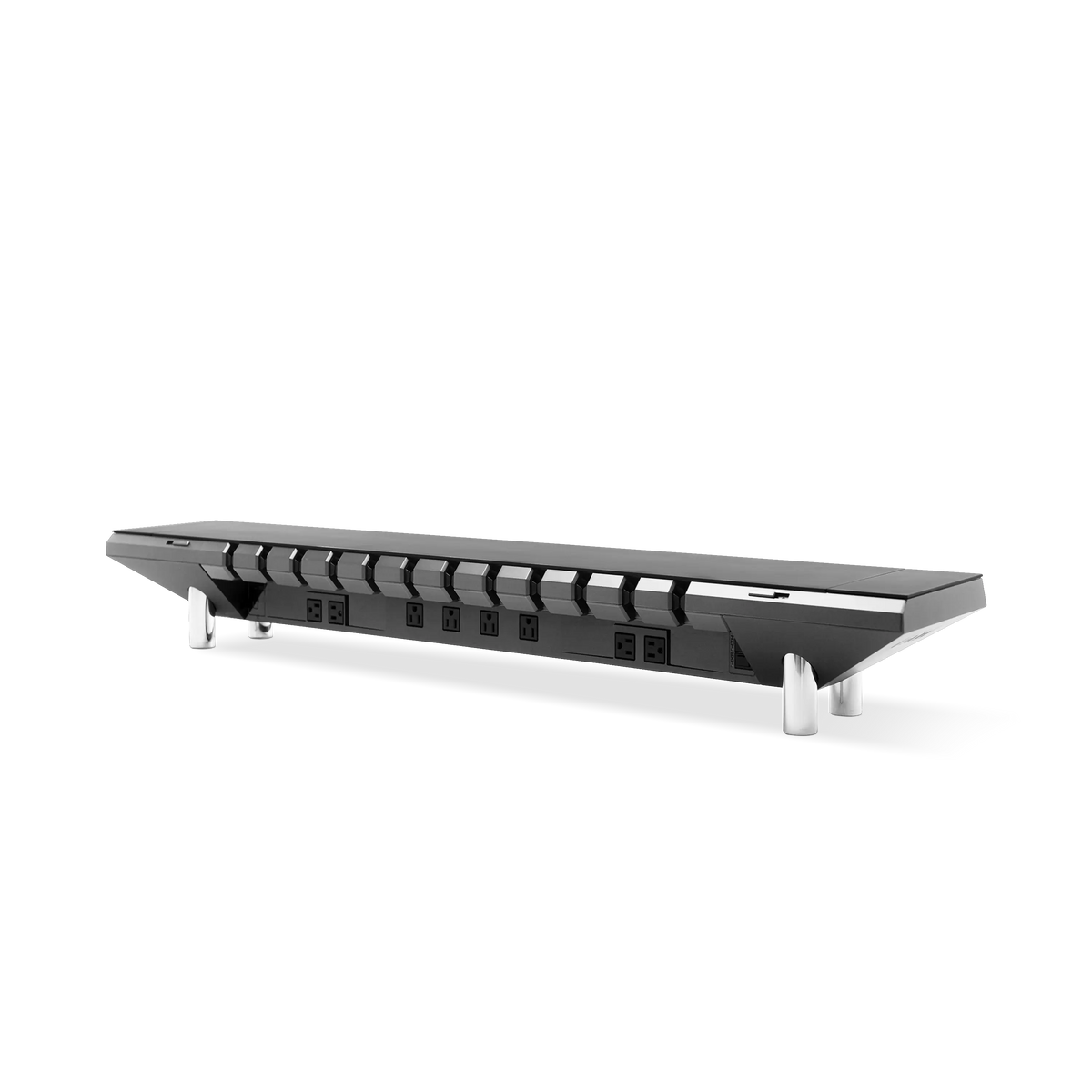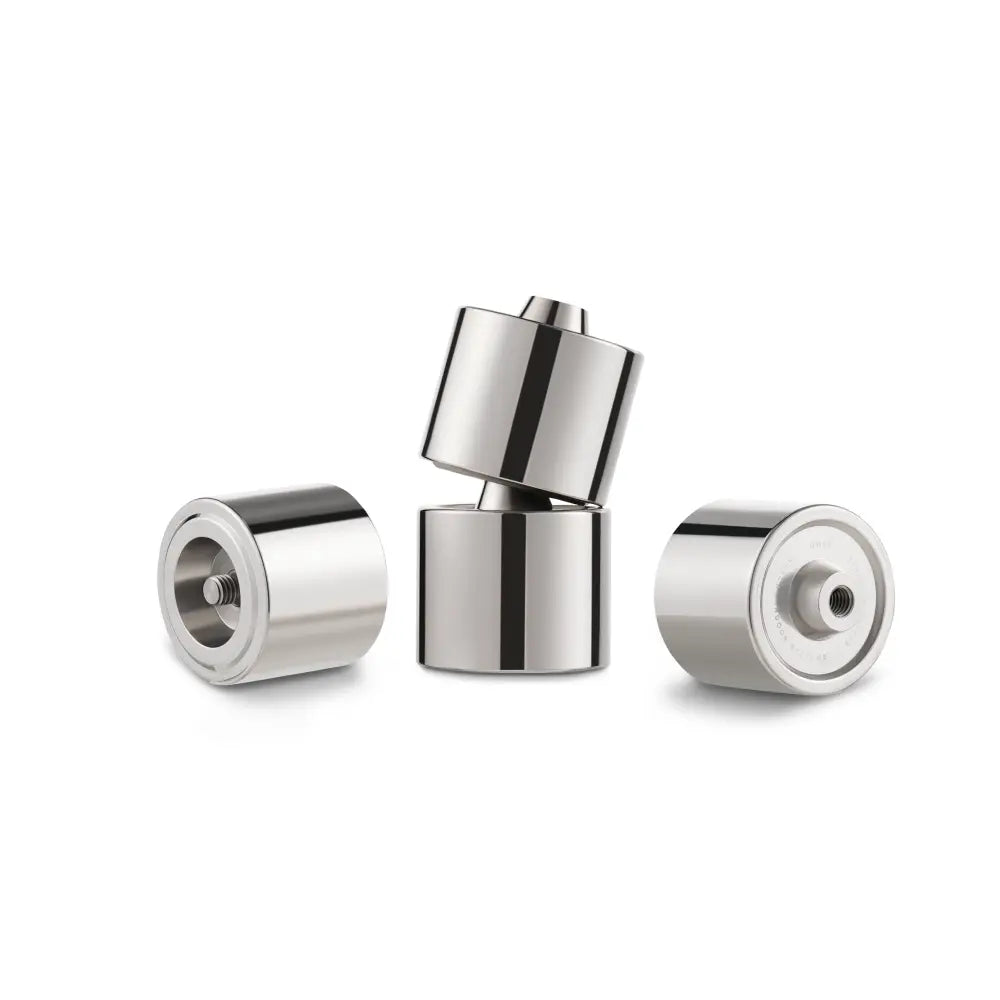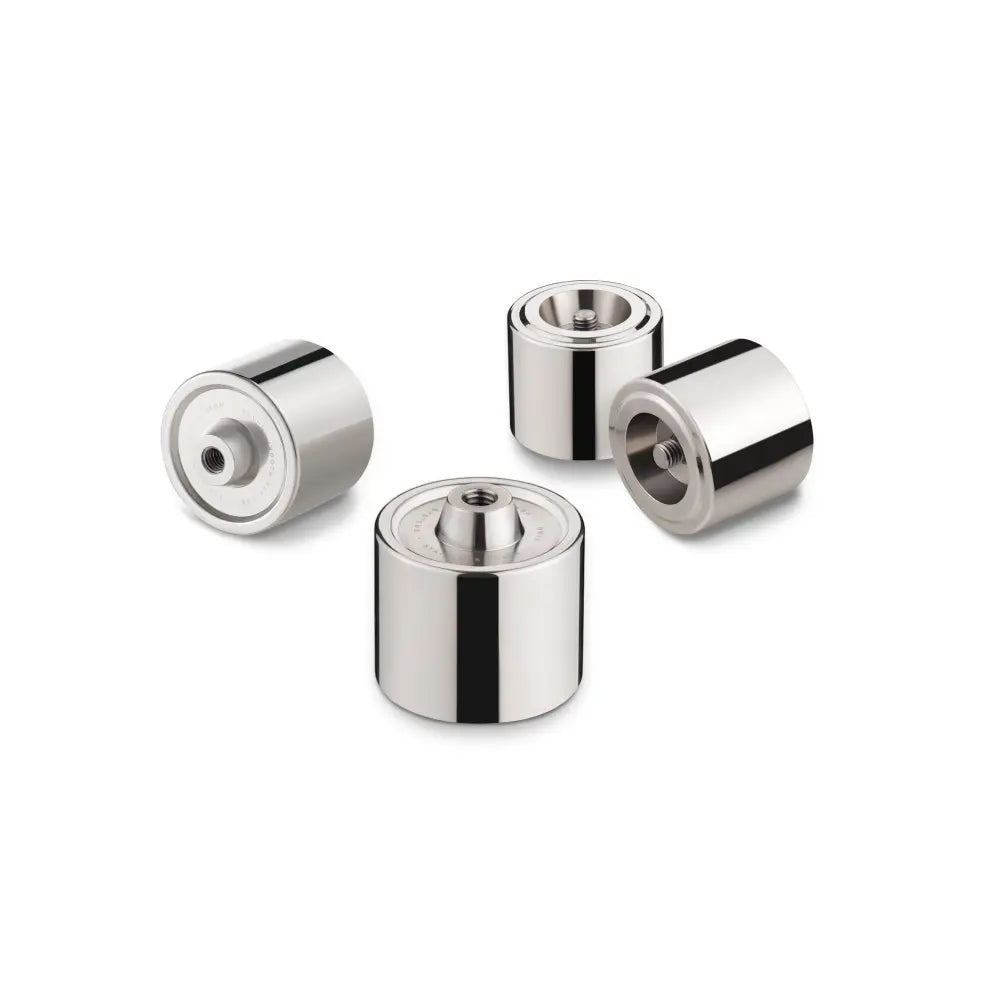De la ingeniería a la estética: Caimar Salizi habla de creatividad, funcionalidad y su victoria en el WDSF 2025
El Hexcal Studio me hace sentir como Batman gracias a la iluminación y el diseño general. Es simplemente genial . Se siente muy robusto y sólido, como una base confiable y un centro de control para toda mi configuración, ya que puedo conectar todos mis dispositivos a él.
Caimar Salizi es un creador de contenido de configuración de escritorios que combina una mentalidad de ingeniería con la expresión creativa. Es padre de tres hijos y un ávido aficionado a la tecnología, el cine y el anime. Caimar enfoca sus configuraciones con la funcionalidad como base, para luego realzarlas con diseños y estética únicos. Con formación en ingeniería, aplica sus habilidades de resolución de problemas a la creación de contenido, tratando cada proyecto como un sistema a optimizar. Su incursión en el nicho de la configuración de escritorios comenzó inesperadamente cuando un simple video de su espacio de trabajo se viralizó, revelando un gran interés del público por las configuraciones auténticas y funcionales. Desde entonces, ha construido una marca personal distintiva combinando funcionalidad, estética y narrativa para crear espacios de trabajo que no solo son eficientes, sino que también reflejan profundamente su personalidad. En 2025, ganó el premio "Configuración de Escritorio del Año" del Festival Mundial de Configuración de Escritorios de Hexcal , consolidando su posición como figura líder en la comunidad global de configuración de escritorios.
P1: ¿Puedes contarnos un poco sobre ti? ¿Quién es Caimar Salizi? Más allá de tus roles profesionales, ¿cómo describirías la perspectiva única o marca personal que aportas a la comunidad de configuración de escritorios?
Soy creador de contenido porque me entusiasma compartir lo que me gusta con el mundo. Además, soy padre de tres hijos y fan de todo tipo de tecnología, equipos no tecnológicos, películas y anime. Pero, en esencia, estas son las cosas que me definen como Caimar. La funcionalidad es el eje central de todo lo que hago. Una vez que la tengo clara, pienso en crear un diseño único y estético para mí.
P2: No empezaste en el ámbito creativo. ¿Qué despertó tu pasión por la creación de contenido y cuál fue el momento revelador que te consolidó para dedicarte a ello profesionalmente? ¿Cómo ha influido tu formación en ingeniería en tu enfoque único para la creación de contenido y la narrativa de productos?
A medida que las plataformas en línea crecían, me inspiré constantemente en creadores de todo el mundo. Recuerdo haber pensado: "¡Guau! ¡Esto es mágico!". Puedo experimentar lo que alguien comparte aunque no me conozca. Eso me abrió los ojos al poder de la creación de contenido.
En aquel entonces, aún no era creador; carecía de las habilidades necesarias, y me llevó años desarrollarlas. El punto de inflexión llegó cuando, trabajando desde casa, empecé a mejorar la configuración de mi escritorio, pero nunca creé contenido al respecto. Cuando hice un tutorial en YouTube sobre Premiere Pro, alguien comentó: "¿Por qué no grabas un vídeo sobre tu fondo, sobre tu escritorio que tienes detrás? Se ve genial". Pensé que mi configuración era básica, pero aun así la puse a punto y grabé un vídeo de bajo presupuesto. Se volvió viral y ya tiene casi medio millón de visualizaciones. Pasé de 300 a 2000 suscriptores y me di cuenta de que había un interés real en lo que compartía. Ese fue mi momento revelador. Cambió por completo mi vida personal y profesional.
Como estudiante de ingeniería, te enseñan a pensar de forma muy mecánica, y hasta cierto punto, la creación de contenido puede ser muy mecánica hasta que surge el arte . Así que creo que lo que me ayudó fue identificar cuándo ser mecánico y cuándo simplemente dejar que el arte fluya. Aprender todos los aspectos de la creación de contenido es como resolver problemas. Necesitas aprender sobre el equipo de cámara, la iluminación, la puesta en escena y la composición. Así que, como sabes, pasar por todo esto fue básicamente un problema de ingeniería donde resuelves una cosa tras otra y luego simplemente combinas todo. Por supuesto, cuando se trata de proyectos prácticos, como construir un montaje real, mi formación en ingeniería me ayuda aún más.
P3: Has comentado que la gente suele conectar con la forma en que presentas tu equipo, no solo con el equipo en sí. ¿Qué hace que un espacio de trabajo valga la pena compartir, más allá de la estética o el equipo?
Creo que todos los espacios de trabajo merecen ser compartidos, porque, en esencia, se trata de resolver problemas. Si tu configuración te soluciona un problema, entonces es valiosa. No importa si está repleta de equipos o es minimalista. Si te funciona, es probable que haya alguien buscando esa solución exacta y aún no la haya visto.
Tomemos como ejemplo mi configuración. He descubierto que conecta con una amplia gama de personas de diferentes profesiones. Y creo que se debe a que abarca varios aspectos: la estética, la funcionalidad, el equipamiento e incluso el diseño de interiores. Compartir configuraciones inspira a otros e incluso puede guiarlos en la dirección correcta. Ahí es cuando creo que compartir cobra poder.

P4: ¿Cómo equilibras la función, la estética y la narrativa en tu propio espacio? Al conceptualizar una nueva configuración o contenido, ¿cuál es el primer elemento que consideras (funcionalidad, estética o narrativa)? ¿Cómo evoluciona esa idea inicial hasta el producto final?
Para mí, se trata de un 50% de funcionalidad, un 40% de estética y un 10% de narrativa. Si no es funcional, no lo uso. Si no es estéticamente agradable, no se sentirá coherente. Cuando la gente ve mis pósteres de anime o la configuración de mi espacio, empiezan a formarse una idea de quién soy incluso sin oír mi voz ni ver mi cara. Mi espacio de trabajo comunica mi personalidad. Demuestra que soy una persona que ama la tecnología y que valora la estética. Cuando un espacio está diseñado con esmero, se convierte en una forma de autoexpresión. Cuenta la historia de la persona que está detrás de él.
Lo primero que siempre considero es la pared detrás del equipo; es, por mucho, el elemento más subestimado. Mucha gente asume que el escritorio en sí es lo que llama la atención, pero en realidad, es la pared la que marca el tono. Por ejemplo, si estoy en un apartamento en un rascacielos del centro y la pared detrás de mí es en realidad una enorme ventana con vistas a la ciudad, esa vista se convierte en el paisaje del equipo. Una vez que la pared está lista, paso al escritorio. Pienso en el tipo de escritorio que quiero y, en esa etapa, ya estoy considerando las paletas de colores y cómo todo se integra visualmente. Después, me concentro en el equipo principal, específicamente en la estantería del escritorio y el monitor, porque ese es mi centro de mando. El resto de los elementos se colocan en capas según el propósito del espacio, ya sea para productividad, edición de video o juegos. Pero sea cual sea el propósito, siempre empiezo con la pared.
P5: ¿Qué hizo que el Hexcal World Desk Setup Festival destacara para ti? Si tuvieras que describirlo en una sola frase, ¿qué dirías?
Fue un festín visual de configuraciones estéticas; cada una fue un éxito. Sinceramente, algunas me parecieron más geniales que la mía.
P6: ¿Puedes explicarnos tu proceso creativo al preparar tu propuesta para el Festival Hexcal World Desk Setup? ¿Experimentaste con diferentes arreglos o perspectivas narrativas para plasmar tu visión única?
Al montar el diseño, quería que la gente viera cómo usé Hexcal Studio en mi espacio y cómo se integra con mi estilo de vida y estética. A veces, una sola foto puede resultar un poco fría o impersonal, pero al incluir primeros planos donde formas parte del diseño, se siente más vivo y cercano. Incluirte en el espacio aporta una energía diferente. Quería que reflejara las cosas que realmente disfruto, como Batman y el anime. Hoy en día, siento que eso falta en algunos diseños de escritorio. La gente simplemente busca ser muy formal y estética, pero puedes ser refinado y estético y, al mismo tiempo, dejar que tu personalidad brille.

P7: ¿Cómo descubrió Hexcal y qué le hizo elegir nuestros productos?
Descubrí Hexcal a través de Midas Tech, otro influencer, en YouTube e Instagram. Pensé: "¿Qué es eso? ¡Se ve súper interesante!". El diseño del Hexcal Studio es increíblemente único y futurista, y sinceramente, no creo que haya nada igual en el mercado. Si Batman y Cybertruck tuvieran un bebé, se parecería al Hexcal Studio. En cuanto lo descubrí, supe que tenía que tener uno. Y, sinceramente, me encantaría que lo lanzaran en blanco. Sería genial.
P8: ¿Cómo contribuye una buena configuración de escritorio a tu trabajo o proceso creativo? Y en cuanto a los productos Hexcal, más allá de sus beneficios funcionales, ¿qué sensación transmiten al integrarlos en tu espacio?
Tener un espacio en el que realmente quieras estar ya es la mitad de la batalla para trabajar. El siguiente paso crucial es reducir la fricción entre tú, tu escritorio y la tarea en cuestión. La configuración actual de mi escritorio es el espacio de trabajo más fluido que he tenido. Hay un claro "por qué" y "por qué" detrás de cada elemento, y esa configuración contribuye enormemente a mi productividad. Si un solo elemento está fuera de lugar, interrumpe todo mi flujo de trabajo.
Sinceramente, el Hexcal Studio me hace sentir como Batman gracias a la iluminación y el diseño general. Es simplemente genial. Se siente muy robusto y sólido, como una base confiable y un centro de control para toda mi configuración, ya que puedo conectar todos mis dispositivos. La bandeja para cables integrada me da tranquilidad, ya que, ya sea que añadas o quites dispositivos, sabes que no habrá desorden de cables. Tener el Hexcal Studio en mi escritorio me da una verdadera sensación de seguridad y organización.
De hecho, tengo un proyecto en mente para Hexcal Studio. No revelaré todos los detalles todavía, pero básicamente, voy a añadir una estación de carga para iPhone con impresión 3D. Va a ser genial.

P9: ¿Qué significa para ti ganar el título de "Configuración de Escritorio del Año" en el WDSF2025 ? ¿Cómo ha influido este reconocimiento en tu trayectoria creativa? ¿Te ha abierto nuevas puertas o inspirado nuevas ideas?
Sinceramente, significa muchísimo para mí. Me quedé impactada cuando me dieron el premio. Me hizo sentir increíblemente agradecida, apreciada y reconocida. Lo que me impactó aún más fue el nivel de competencia. Había algunas configuraciones increíbles en esa lista, así que ser elegida entre ellas significó mucho. Ahora que he recibido el premio físico, lo siento aún más real. Lo volveré a hacer y ya tengo algunas ideas. ¡Estoy deseando mostrarles lo que viene!
Como gané tan recientemente, tendremos que esperar a ver cuántas puertas abre en el futuro, porque es demasiado pronto para saberlo. Sin duda, me ha dado ideas sobre cómo puedo mejorar mi rendimiento el año que viene. También estoy pensando en cómo usar Hexcal Studio de maneras que la gente aún no ha probado, o en colocarlo en espacios donde no se ve a menudo.
P10: ¿Qué tipo de desarrollo tecnológico o tendencia estética le gustaría ver crecer en la comunidad de configuración de escritorios en los próximos años?
Sinceramente, me encanta la impresión 3D. Si más gente empezara a incorporar elementos impresos en 3D en sus instalaciones, podría llevar las cosas a otro nivel. La posibilidad de crear cosas virtualmente y luego darles vida en el mundo físico es realmente emocionante.

P11: ¿Tu trayectoria en la creación de contenido ha tenido momentos de duda o dificultad? ¿Qué te motivó a seguir adelante y qué consejo le darías a alguien que se inicia en el nicho de la configuración de escritorios y la estética del espacio de trabajo? ¿Qué error común observas y cómo se puede evitar?
Todos los días. Aunque crear contenido pueda parecer fácil desde fuera, no es nada fácil. Es un campo multidisciplinario. Implica planificación, logística, finanzas, resiliencia emocional y esfuerzo físico. Y mucha gente no habla de eso. Lo que me impulsa, en el fondo, es mi familia. Y más allá de eso, es por mí mismo. De verdad me encanta hacer esto porque me da tranquilidad. La idea de renunciar a ello para ir a la oficina a un trabajo que no me interesa es lo que me motiva a seguir adelante. Agradezco poder dedicar mis días a algo que disfruto.
Si estás empezando, lo más importante es simple: simplemente publica. No te preocupes por ser perfecto. No esperes a sentirte listo. Se trata de sentirte cómodo exponiéndote, incluso cuando te sientas incómodo. Aprenderás las habilidades con el tiempo.
Pensar que necesitas que todo esté perfecto antes de empezar es uno de los errores más comunes. Pero lo cierto es que no hay un momento perfecto para empezar. Esperar a que todo esté perfecto solo retrasa tu propio éxito. Mucha gente cree que necesita una cámara, un escritorio o una silla específicos para poder crear contenido. Pero eso no es cierto. Literalmente hice mi primer estante de escritorio cortando un trozo de madera y poniéndole patas de mueble. Solo hay que ser creativo e ingenioso.
Es como ir al gimnasio. En lugar de simplemente ir, la gente se convence de que necesita comprarse zapatillas nuevas, ropa deportiva nueva o una bolsa de gimnasio. Pero en realidad, solo necesitas ir al gimnasio. Lo mismo ocurre con la creación de contenido. No dejes que la preparación se convierta en un obstáculo.
Sin embargo, la creación de contenido es diferente a otras cosas en el sentido de que existe un factor desconocido. Nunca se sabe qué contenido tendrá éxito. Puedo mostrarles videos en mi Instagram que han tenido 10 o incluso 50 millones de visitas, y, sinceramente, la mayoría fueron los que casi no hice. Tampoco quería publicarlos. Pero lo hice, y terminaron cambiando el rumbo de mi trabajo.
Ese es el poder de lo desconocido. Puede llevarte increíblemente lejos o frenarte. Imagina si no hubiera publicado esos videos... Quizás ni siquiera tuviera la plataforma que tengo hoy. Podría haber alguien ahí afuera ahora mismo esperando el contenido exacto que tienes en mente, y nunca lo verá si no lo publicas. Piensa en algo que viste en línea y disfrutaste mucho. Imagina si decidiera no compartirlo. Sería una locura, ¿verdad?
Nos preocupamos mucho por ser juzgados o por no ser perfectos, pero la verdad es que la mayoría de la gente no piensa en ti tan profundamente. No te critican como crees; solo buscan algo con lo que conectar. Y si lo que dices o creas es genuino, créeme, alguien ahí fuera quiere verlo.
Enlaces de redes sociales de Caimar Salizi:

